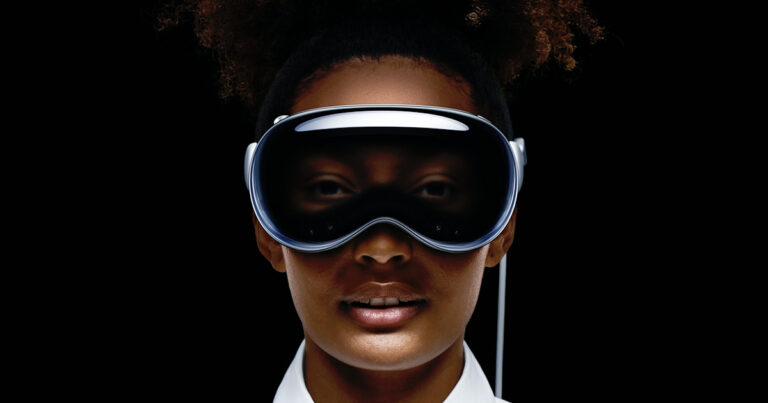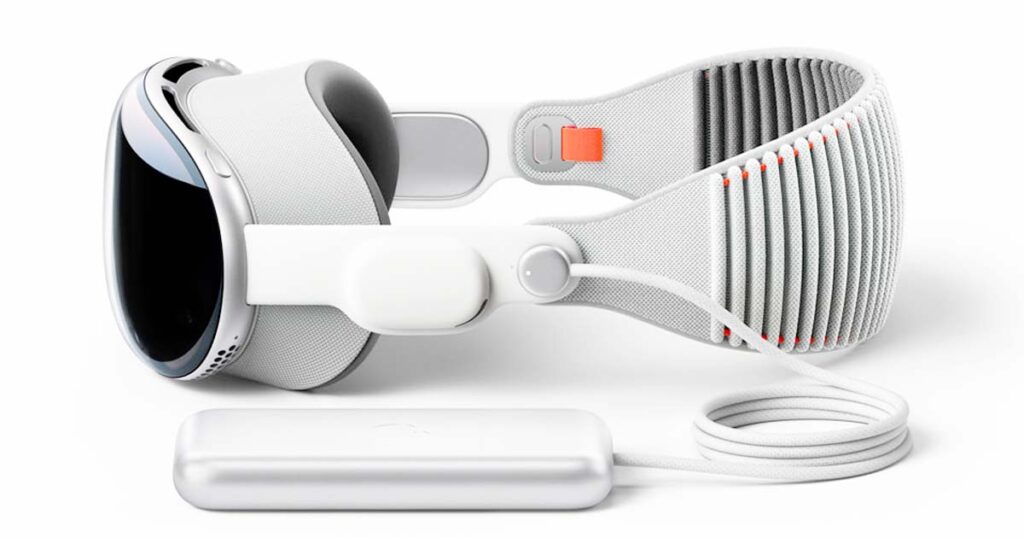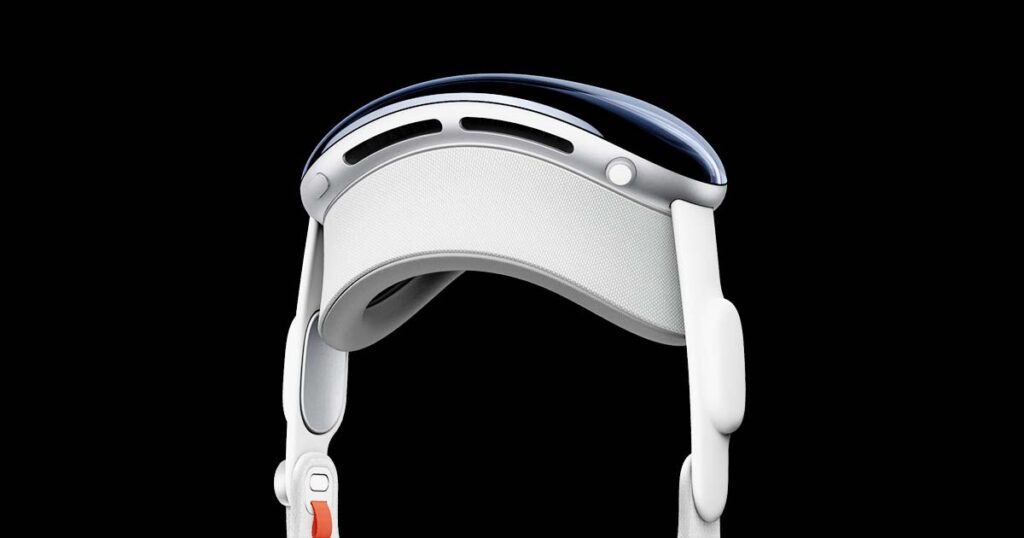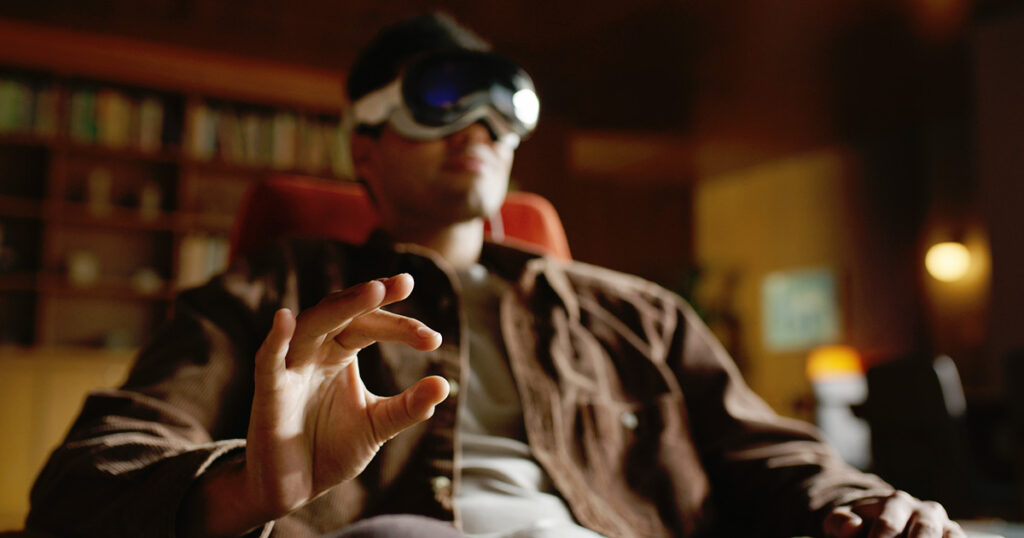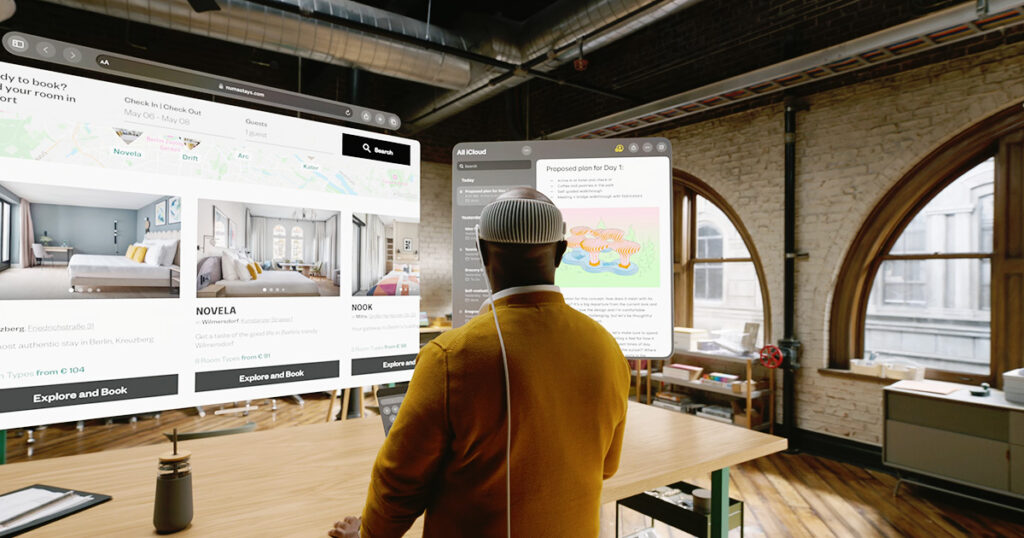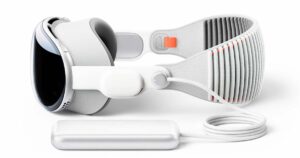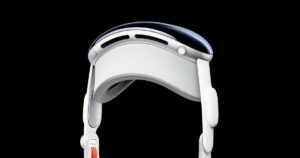In the simplest terms, the Apple Vision Pro is a virtual reality headset with high-quality passthrough cameras for immersive augmented reality experiences built for productivity and personal use. Whereas most popular VR headsets, like PSVR 2, are focused on gaming experiences, Apple Vision Pro is built from the ground up for personal and professional use.
Yes, Apple Vision Pro is technically a mixed-reality headset but it’s, functionally, unlike any other headset on the market. Apple is positioning the Vision Pro as the first in an entirely new product category, which it calls spatial computers. Apple CEO Tim Cook said that the announcement “marks the beginning of a new era for personal computing,” likening the leap to spatial computing to that of mobile computing with smartphones. The external cameras can also be used for 3D photography and recording spatial video and audio.
The Apple Vision Pro uses a high-resolution custom micro-OLED display system and a massive array of cameras and sensors, inside and out, to deliver an immersive interface that's controlled with your eyes and hand gestures. and a lifelike video stream of the real world.
Vision Pro will run VisionOS, a dedicated operating system built to deliver a three-dimensional user interface that Apple calls “the world’s first spatial operating system.”
The Apple Vision Pro has been likened to a pair of ski goggles, even in leaked renders previous to the official reveal. It's not difficult to see why. Apple says this design provides all-day comfort while also delivering a tight enough fit to minimise any light bleed (VR's natural enemy.)
Many of the design elements, such as the curved laminated glass, aluminium frame, speaker grill and ribbed headband, have been inherited from the Apple Watch. The Apple Vision Pro even has it's own crown, which is shown adjusting the "level of immersion" in the video above.
The headband also has in-built headphones; dual-driver audio pods designed to allow in ambient sound and create a 360-degree spatial audio experience.
It's all fueled by an external battery, which will give the Vision Pro headset two hours of battery life on the go, and can be plugged into the mains for all-day use if you're at a desk or on the lounge at home.
Essentially a little computer for your face, the Apple Vision Pro is run by a dual-chip system; the impressive M2 chip found in Apple's laptops, and a bespoke R1 chip, a new processing unit designed specifically to create a "virtually lag-free, real-time view of the world."
Pricing and availability for the Apple Vision Pro was one of the very last points in the WWDC showcase but is understandably the question at the front of everyone’s minds.
We don’t have Australian pricing and release details for Apple Vision Pro yet, but the headset will release “early next year” in the US for US$3,499 via Apple’s online and physical stores with “more countries” coming next year. In short, it’s an expensive piece of kit. At the current exchange rate, that US pricing is just shy of $5,300 in Australia. So we should expect to pay somewhere in the ballpark of $5,000 if and when Apple Vision Pro releases in Australia.
